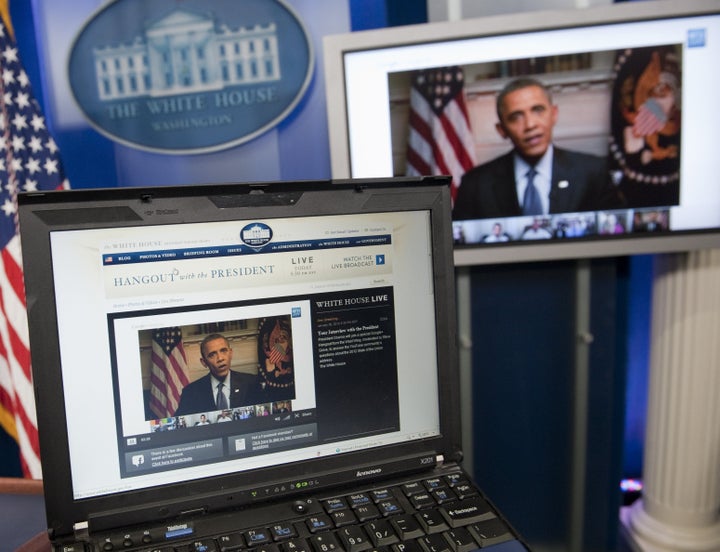
Digital technology played a critical role this election cycle. It was the backbone of effective communication and analysis. And President Barack Obama's campaign made much better use of the digital technology than Gov. Mitt Romney's.
Online communication has increased by orders of magnitude since the last election cycle. Internet users have doubled. Facebook users have increased ten times. Tweets have increased 1000 times.
Obama used emerging technology to humanize himself and stay in tune with the people. His campaign advertised his achievements and drew sharp contrasts with his opponent. And he responded to events at the speed of light. This influenced voters throughout the election process.
Not content with just TV or billboard ads, Democrats made entire websites that went viral. For example, if you Google "Romney tax plan," the first hit takes you to a site that looks like you will find details of Romney's tax plan. But that is a trick. It is actually an ad by Obama campaign and tells you there is no details to the Romney Tax plan at all.
Technology exaggerated what people saw in the debates. In first presidential debate, not everyone thought Obama lost. But the constant messaging by media on how bad the first debate was reinforced that perception in people's mind. And that perception became the reality, at least in short term. Similarly after the VP debate, most people probably would not have noticed how much water Paul Ryan drank if it were not for the SNL skit on YouTube.
When Hurricane Sandy hit, the people actually saw their government preparing and recovering from the disaster. Instead of the horrific images they saw of Katrina under Bush, people saw Governor Chris Christie and Mayor Michael Bloomberg gushing over Obama. Obama was portrayed as being bipartisan and pragmatic. Once again, Romney was nowhere to be seen. He was hiding from his previous statement that he would abolish FEMA.
Ohio voters saw real-time Obama touting the results of the bailout, and Chrysler calling out lies in Romney's advertisements.
By contrast, Mitt Romney was not even able to keep up with major developments happening around him and let others control the message. His fellow Republicans were declaring that a pregnancy from rape was a "gift from god," and explaining nuances of "legitimate rape" vs. "actual rape" to the electorate. Romney had no response, no damage control. It was Tina Fey who was connecting with the American people by saying, "If I have to listen to one more grave-faced man with a two dollar haircut explain to me what rape is, I'm going to lose my mind." Romney stood by as his party waged a so-called "War on Women."
Obama's excellent communication was enabled by data analysis technologies. This kind of data driven decision making allowed Obama to focus on the states and the issues that mattered the most. Meanwhile, Romney's campaign was relying on Karl Rove's fantasy-filled electoral map, non-existent Republican momentum, and decade-old voter turnout models. But ignoring the facts only led to eventual disappointment for the Romney Campaign.
People on the right, like Karl Rove and Dick Morris, were blissfully wrong about elections. But Nate Silver with his statistic-based, algorithmic, data-driven deductive approach was the right guide, once again, in this election process. This was a win not just for Obama, but also for fact based analytical reasoning.
This edge in communication and analysis allowed Obama to win a whopping 332 electoral votes (more than 61 percent) even though he got just 51 percent of the popular vote. Obama had a focused targeted message that won him the swing states of Pennsylvania, Ohio, Virginia and Florida.
In the next few years, I expect to see more and more of candidate-specific apps and even political issues based apps. I see more of mobile apps that track and predict elections. I see apps that engage with the politicians. I see more and more of the election process being data driven.
In summary, under layers and layers of technology we reached out to that human being who looked different than any other American president in our history of America.
We wanted him. We got him to lead us through the next four years.
We Americans are amazing.